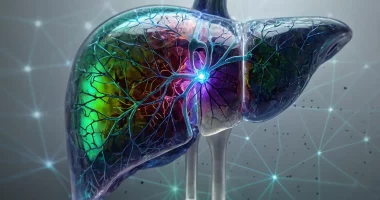Beta-thalassemia is a genetic disorder of blood that decreases the quantity of hemoglobin, a protein that transports oxygen and gives blood its red color. People along beta-thalassemia often have anemia, which means they have fewer healthy and good RBC.
There are four types of beta-thalassemia:
- Beta-thalassemia minor: Causes few or no symptoms.
- Beta-thalassemia major: Causes severe symptoms and may need blood transfusions.
- Beta-thalassemia intermedia: Causes symptoms that are between minor and major forms.
- Dominant beta-thalassemia: Another form of the disorder.
Beta-thalassemia is inherited through genes in an autosomal recessive pattern. This means a person is required to inherit two mutated genes to have the disorder. People with only one mutated gene may have minor beta-thalassemia and usually have light or no symptoms.
What is Beta-thalassemia?
It is a genetic disorder caused by a mutation in the HBB gene. This mutation leads to lower production of hemoglobin, a protein that transports oxygen and iron in the body.
Reduced hemoglobin levels cause problems with iron and oxygen in the body, which can lead to various medical signs. In children, beta-thalassemia may affect development and growth. Without medication, it can cause organ failure, severe anemia (low RBC), bleeding issues, and problems with the nervous system.
Beta-thalassemia comes in different forms: minor and major.
Beta-thalassemia trait means a person has one mutated gene for the disorder. Many people with this kind have no signs and may not even know they carry the gene.
Some people along beta-thalassemia trait may have mild anemia, but it’s usually not as severe as in those with two mutated genes.
Beta-thalassemia major, also known as Cooley’s anemia, happens when someone inherits two mutated genes. This is the most severe type and can cause serious anemia. Without treatment, it can harm organs. Individuals with Cooley’s anemia often need regular blood transfusions to replace hemoglobin and RBC.
Beta-thalassemia intermedia is in between the minor and major forms. Symptoms can vary, sometimes being mild and other times more severe.
Causes
It is mainly caused by changes in the HBB gene. Normally, hemoglobin has two alpha & two beta chains joined to a heme ring. HBB gene mutations reduce or stop the generation of beta chains, which affects hemoglobin.
Scientists have found over 200 different mutations that can lead to thalassemia.
If someone inherits one mutated gene, they becomes a carrier. They might pass the gene to their children. Some carriers may have beta-thalassemia trait, with mild symptoms or no symptoms.
To have the more severe kinds of beta-thalassemia, like major or intermedia, a person needs to inherit two copies of the mutated gene.
Sometimes, changes in the HBB gene caused by missing genetic material can also lead to beta-thalassemia, but this is rare. Most cases are from inherited mutations passed down in families.
Symptoms
Symptoms are vary depending on which type a person has.
Many people along Beta-thalassemia trait have no symptoms or only mild anemia, which means they may feel a bit weak or tired.
Beta-thalassemia intermedia or major are more severe. Symptoms can include:
- Babies might not gain enough weight or might have trouble growing.
- Severe anemia can cause weakness, headaches, dizziness, and shortness of breath.
- Jaundice, where the skin and the whites of the eyes turn yellow.
- Fevers and irritability in babies and kids.
- Enlarged liver or spleen, which can make the belly feel swollen.
- Problems with bleeding, like nosebleeds or bruising easily.
- Higher chance of getting infections or getting sick often.
Without medication, beta-thalassemia may harm the bones and bone marrow, changing how the face looks or making the knees bend inward, which can make walking harder.
Sometimes, lumps can form the external side of the bone marrow where hemoglobin is made, which might hurt organs. There’s also a higher chance of dangerous blood clots.
Medicating beta-thalassemia may cause other issues too, especially having too much iron in the body. This can lead to problems like:
- Heart, pancreas, liver, or testicle problems.
- Diabetes
- Parkinson’s disease starts early.
- Thyroid or parathyroid problems.
Diagnosis
Diagnosing beta-thalassemia involves several steps to understand the situation and its effects on the body.
First, doctors take a blood sample from a vein to check for anemia. They use tests like all over blood count to measure hemoglobin levels, and a blood smear to examine RBC. Iron studies help determine if there’s iron deficiency anemia or other related issues. They also look at erythrocyte porphyrin levels to eliminate conditions like lead poisoning.
Another crucial test is hemoglobin electrophoresis, which shows the different types of hemoglobin present. A DNA test may also be done to detect specific mutations.
In some cases, especially during pregnancy, doctors might test amniotic fluid to see if a fetus has beta-thalassemia.
Monitoring is essential for those along beta-thalassemia, involving regular tests to check how their organs are functioning. This helps manage and stop complications.
Treatment
Treatment for beta-thalassemia aims to manage symptoms because there is currently no cure for this condition. The type of treatment depends on the severity of a person’s symptoms.
Some individuals along beta-thalassemia experience no symptoms and therefore require no treatment.
For many others, especially those with more severe forms, treatment may involve taking folic acid supplements to support healthy red blood cell production. Those with significant symptoms often require regular blood transfusions to maintain adequate levels of RBC in their body.
In addition to these primary treatments, some individuals may need other interventions such as gallbladder or spleen removal. Gene therapy and participation in clinical trials are options for exploring new treatments that could improve outcomes for people along beta-thalassemia.
Managing iron levels is also crucial. Iron chelation therapy may be necessary to prevent the accumulation of excessive iron in the body, which can lead to serious complications over time.
Outlook
The outlook for individuals along beta-thalassemia varies depending on the type they have.
Beta-thalassemia trait generally has a positive outlook, often requiring no specific treatment and allowing individuals to live normal lives without symptoms.
However, for those along beta-thalassemia intermedia or major, ongoing treatment is usually necessary. This can lead to complications such as iron overload from frequent blood transfusions, an increased risk of diseases and infections due to transfusions, reactions to transfusions, organ damage, delayed puberty, and nerve pain or other neurological issues.
Managing beta-thalassemia is a long-term commitment that involves regular monitoring and medical care. With proper treatment and adherence to medical advice, individuals can lead fulfilling lives despite the challenges posed by the situation.
Summary
Beta-thalassemia is a genetic blood disorder affecting hemoglobin production due to mutations in the HBB gene. It comes in different forms—minor, intermedia, and major—each varying in severity and symptoms. Diagnosis involves blood tests like hemoglobin electrophoresis and DNA testing.
Treatment focuses on managing symptoms, from folic acid supplements to regular blood transfusions and iron chelation therapy. While beta-thalassemia trait often has a positive outlook with minimal impact, intermedia and major forms require ongoing care to manage complications such as iron overload and organ damage. With proper treatment and monitoring, individuals can lead fulfilling lives despite the challenges of this chronic illness.









